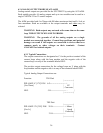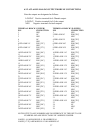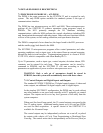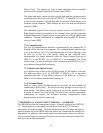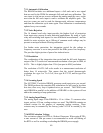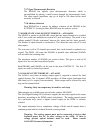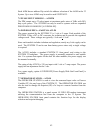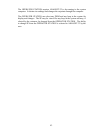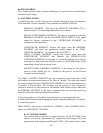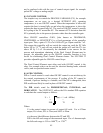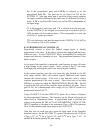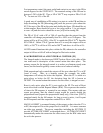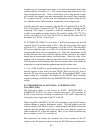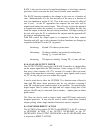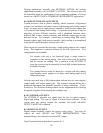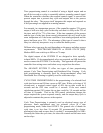44
8.0 PID CONTROL
This section provides some common definitions of control terms and information
on control loop tuning.
8.1 CONTROL LOOPS
A control loop may consist of four or five elements depending upon the placement
of the functions of some elements. These elements are defined as follows:
PRIMARY ELEMENT: This senses the PROCESS VARIABLE (PV), a
thermocouple (T/C) measuring temperature is an example.
SIGNAL CONDITIONER ELEMENT: this may be required between the
PRIMARY ELEMENT and the CONTROLLER ELEMENT if the signal
cannot be directly connected to the CONTROLLER ELEMENT. An
example is a pH transmitter.
CONTROLLER ELEMENT: accepts the signal from the PRIMARY
ELEMENT and sends the appropriate control signal to the FINAL
CONTROL ELEMENT. An example is the SYSTEM 32.
FINAL CONTROL ELEMENT: accepts the control signal from the
CONTROLLER ELEMENT and controls the MANIPULATED
VARIABLE ELEMENT. An example is a motor positioning valve unit for
the control of natural gas into a burner system or a Solid State Relay (SSR)
controlling voltage into an electric load.
MANIPULATED VARIABLE ELEMENT: is the energy of the process
such as steam, natural gas, etc... needed by the process for the Process
Variable to reach Setpoint.
The FINAL CONTROL ELEMENT may be controlled in open loop, that is with
out feedback or direct measurement of the Process Variable. For open loop control
the control output from the CONTROLLER ELEMENT is set to some output level
to produce a desired effect. This assumes that the process is slow enough for
corrective action to be taken based on information from another source other than
the PRIMARY ELEMENT or the process characteristics are such that open loop
control will hold the Setpoint within desired limits.
Closed loop makes use of feedback from the process, comparing the Process
Variable to the Setpoint, and changing the control output automatically as required
to control the process.
OPEN LOOP is also known as MANUAL CONTROL, while CLOSED LOOP is
known as AUTOMATIC CONTROL.
8.1.2 CONTROL MODES
The control mode is the form of control function. In the SYSTEM 32 the
choices are: on/off, proportional [P], proportional and integral [PI], and
proportional with integral and differential [PID]. The control mode should



